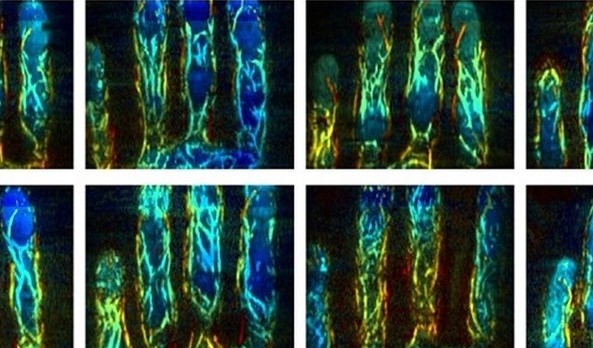Smartphones will soon use 3D biometric authentication via finger veins
The researchers are now working to make the system even smaller and to reduce the imaging time to less than one second. They note that it should be possible to implement the photoacoustic system in smartphones since ultrasound systems have already been developed for use in smartphones. This could enable portable or wearable systems that perform biometric authentication in real-time. Biometric authentication has been in practical and commercial use for years now, with it most commonly appearing in the form of fingerprint or facial features-based scanning.
This development also implies a myriad of possible applications in various consumer-grade products as well, like smartphones that have been pushing boundaries with new biometric authentication techniques in recent generations. While the system is currently in development, with a few passing years a miniaturized version might be a possibility, bringing a new form of security to handsets that are practically foolproof. It may even be housed similarly to where current-gen in-display fingerprint scanners are mounted.
Ideology
- The system uses photoacoustic tomography, an imaging technique that combines light and sound, which was first reported by ScienceDaily.
- Light from a laser is first used to illuminate the finger, and when hitting this hits the veins, a sound is created which is then detected by an ultrasound detector that uses the information to reconstruct a 3D image of the veins.
- This solution may change the way OEMs approach security in smartphones in the future and might even be the next generation of the standards that are currently in place.

Actual working
- The technique essentially detects invisible features in 3D and can be used to offer better security to offer protection over personal data and other sensitive documents as well. Biometric authentication techniques based on finger veins aren’t exactly new, but these are generally based on 2D images.
- The new techniques add another layer of depth with 3D images that significantly increases security, making it a lot harder to fake and makes the possibility of a false positive less likely.
- So, if a smartphone with this feature launches, its security authentication would be one of the greatest amongst the current generation of smartphones.
- "The 3D finger vein biometric authentication method we developed enables levels of specificity and anti-spoofing that were not possible before," said Jun Xia, from University at Buffalo, The State University of New York, research team leader. "Since no two people have exactly the same 3D vein pattern, faking a vein biometric authentication would require creating an exact 3D replica of a person's finger veins, which is basically not possible."
- In the Optical Society (OSA) journal Applied Optics, the researchers describe their new approach, which represents the first time that photoacoustic tomography has been used for 3D finger vein biometric authentication. Tests of the method on people showed that it can correctly accept or reject an identity 99 percent of the time.
Conclusion
Due to the COVID-19 pandemic, many jobs and services are now performed remotely," said research team member Giovanni Milione, from NEC Laboratories America, Inc. Because our technique detects invisible features in 3D, it could be used to enable better authentication techniques to protect personnel data and sensitive documents.






